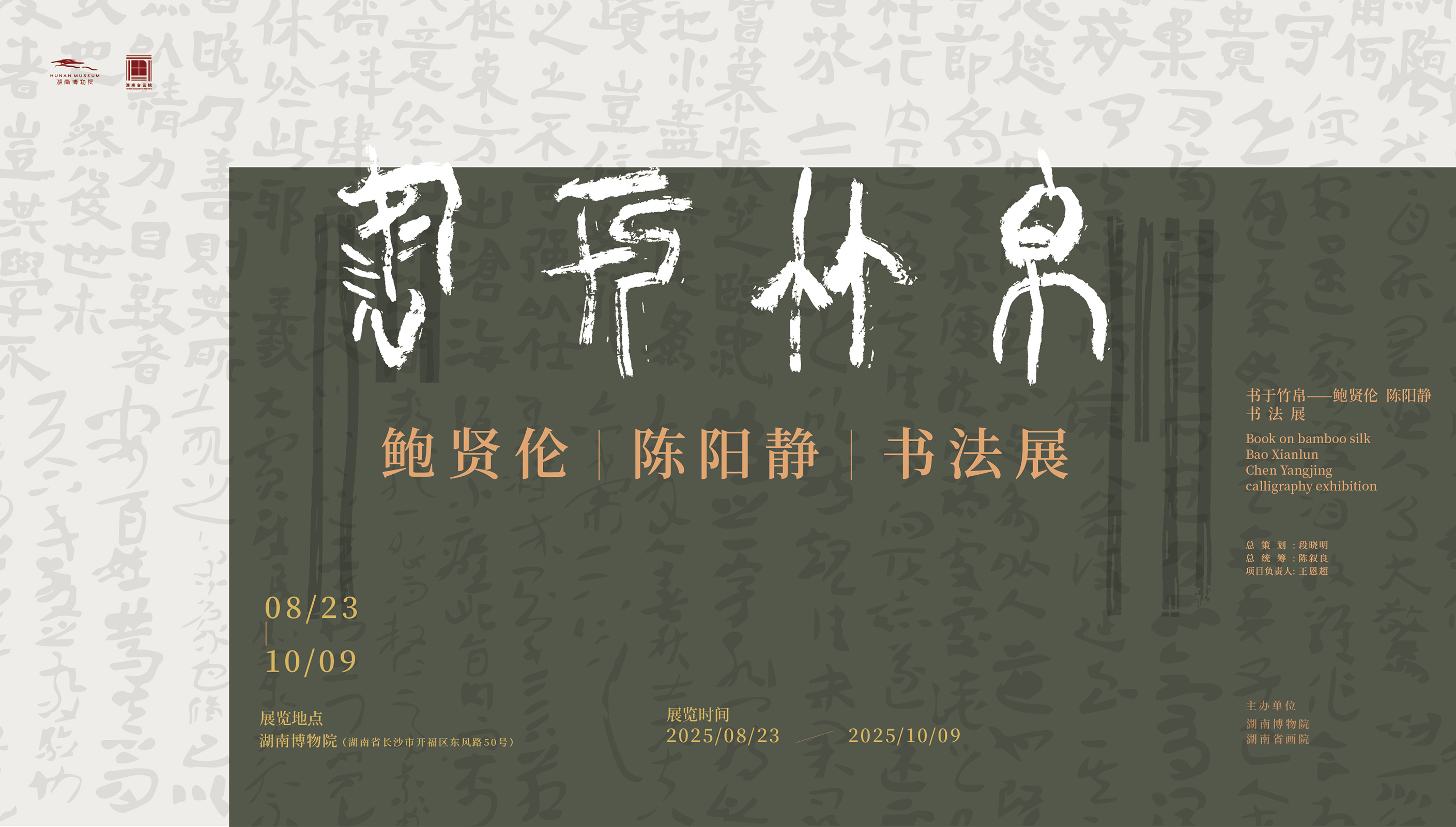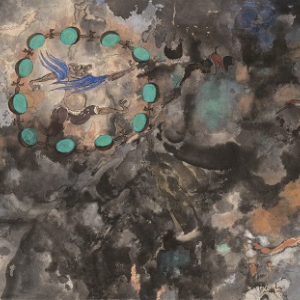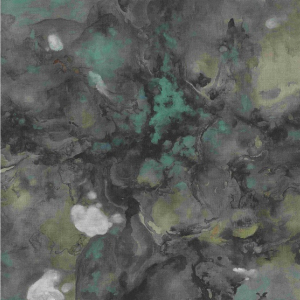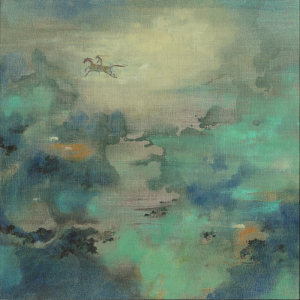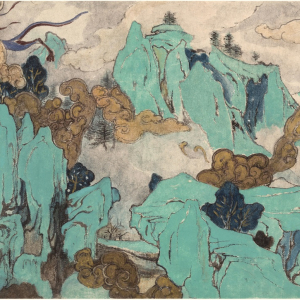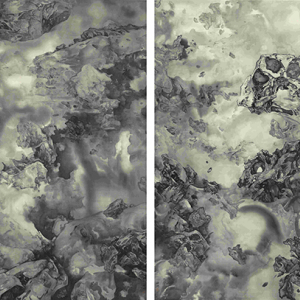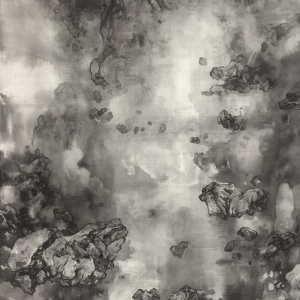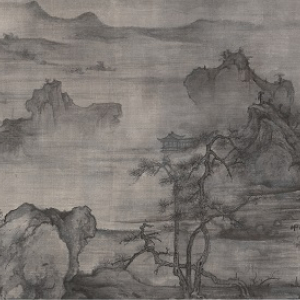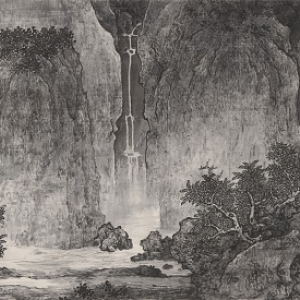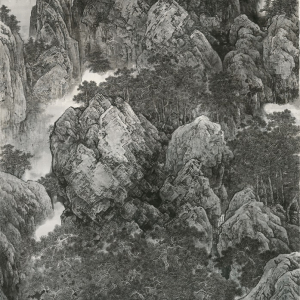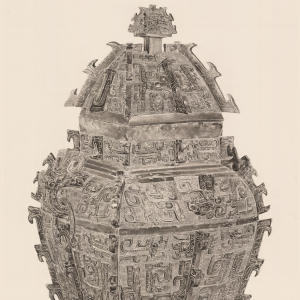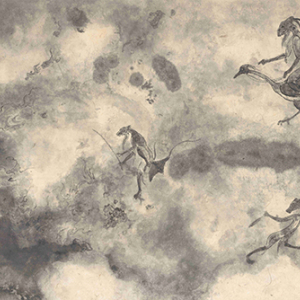Hunan Museum
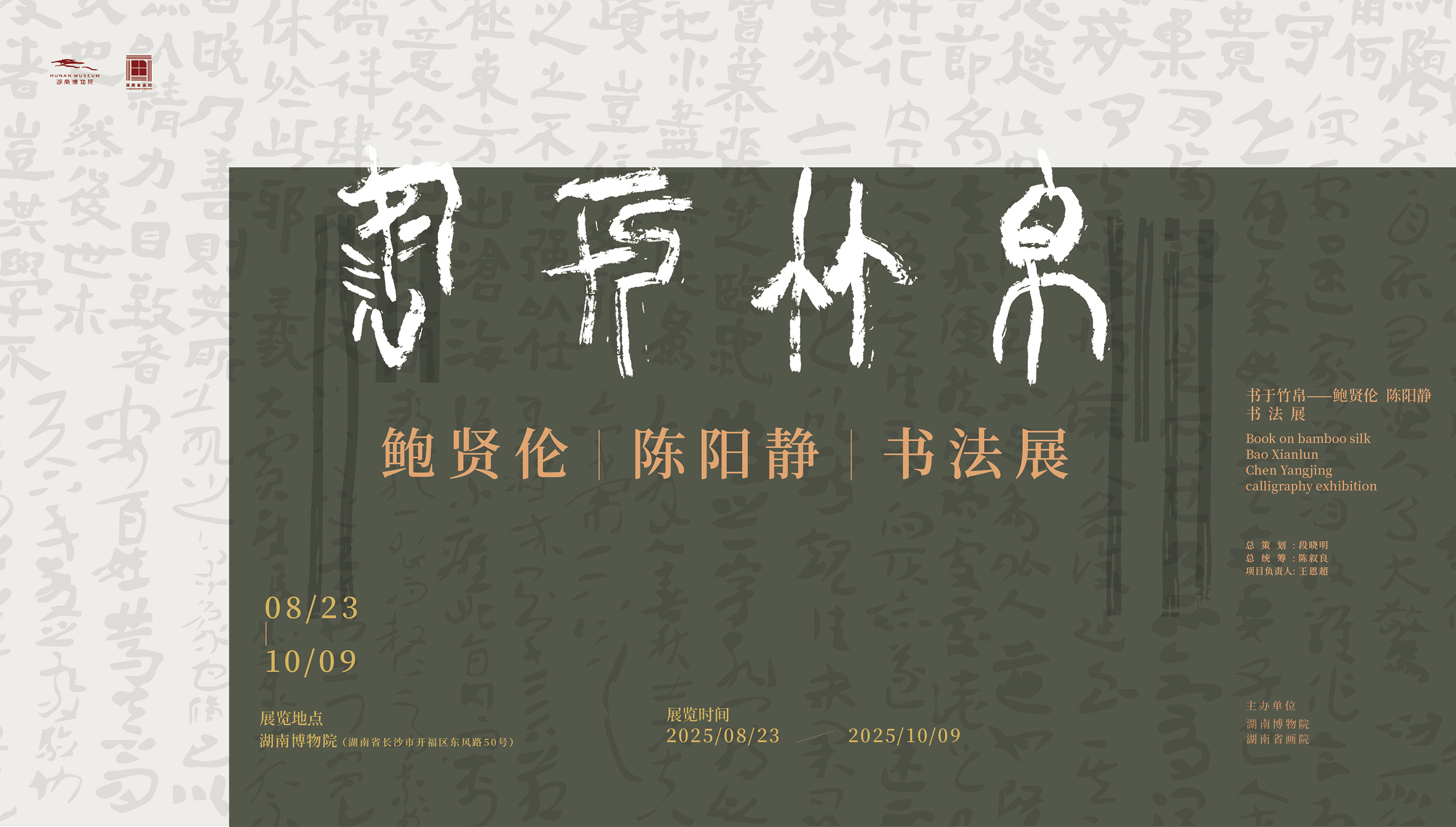
Introduction
“Book on Bamboo Silk Bao Xianlun and Chen Yangjing Calligraphy Exhibition
Hunan Museum will present “Book on bamboo silk Bao Xianlun and Chen Yangjing calligraphy exhibition” in Special Exhibition Hall 3 on the third floor from August 23 to October 9, 2025. The exhibition is co-organized by Hunan Museum and Hunan Provincial Painting Academy.
Hunan ranks among the most significant regions in China for bamboo and silk manuscripts, accounting for nearly two-thirds of the nation’s total discoveries. Notable archaeological findings including the Warring States silk manuscripts from Zidanku, Qin dynasty bamboo slips from Liye, Han dynasty silk texts from Mawangdui, and the Wu State bamboo slips of the Three Kingdoms period unearthed at Changsha’s Zoumalou site, are unparalleled nationwide in terms of historical span, preservation quality and content richness. These artifacts constitute a treasure trove of Chinese calligraphic art and reflect the profound cultural legacy of the Hunan region.
The exhibition title, “Book on bamboo silk”, embodies a dual curatorial vision. First, it refers to the two calligraphers’ profound deconstruction and creative reinterpretation of traditional Chinese calligraphy. Through their distinctive brushwork, they revitalize the spirit of ancient writing and pay homage to its classical origins. Second, it underscores the shared commitment of museums and calligraphers in the modern era: to enhance the conservation and dynamic utilization of bamboo and silk manuscripts. By facilitating a cross-temporal dialogue between contemporary calligraphic practice and ancient artifacts, the exhibition seeks to genuinely bring cultural relics to life, transcending their static display in storage or vitrines.
Structured as a dual solo exhibition, the presentation is divided into two sections, each dedicated to one artist’s contemporary transformation of bamboo and silk manuscript aesthetics, informed by their unique calligraphic style. Featuring over 70 works (sets) by Bao Xianlun and Chen Yangjing, the exhibition draws inspiration from slip calligraphy, with each artist tracing its origins and achieving modern excellence in Qin and Han-inspired creations through highly individualized brush language. This endeavor initiates a transcendent conversation through bamboo and silk across time. Their works seamlessly integrate the subtleties of traditional calligraphy with contemporary aesthetic sensibilities, demonstrating both a deep engagement with China’s cultural legacy and the innovative vitality of calligraphic art in the present day.
Highlights
- 史游《急就篇•第一》
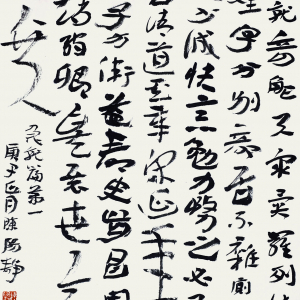
- 汉·崔子玉《座右铭》
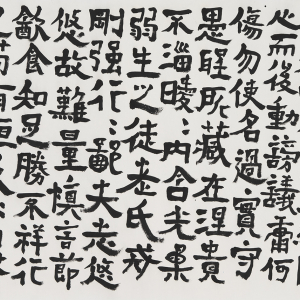
- 史游《急就章·终篇》
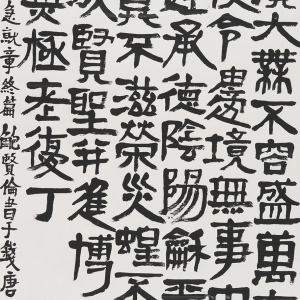
- 闲读偶贪联
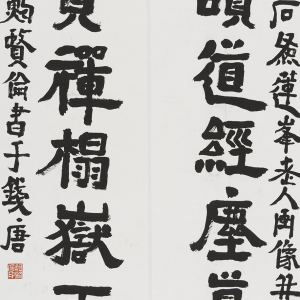
- 史游《急就篇•第七》
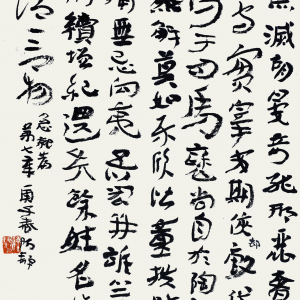
- 史游《急就篇•第八》
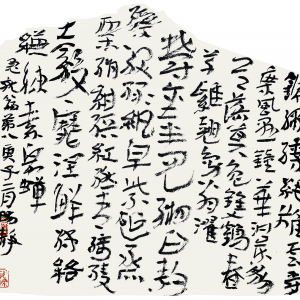
- 残煤秃管
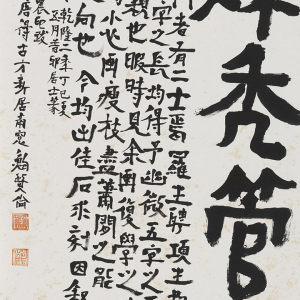
- 史游《急就篇•第十一》
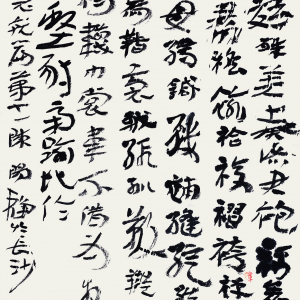
- 史游《急就篇•第十九》
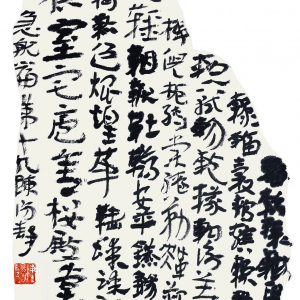
- 《论语•微子•长沮桀溺藕而耕章》
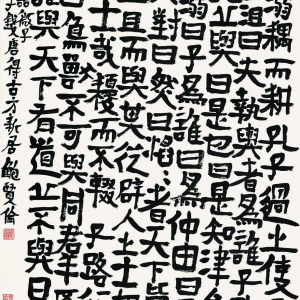
- 张廷济《清仪阁杂咏·瓦荷盂》

-
See More
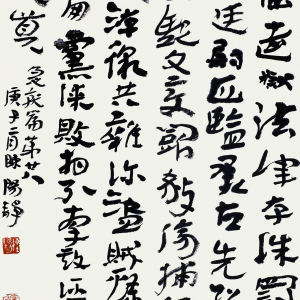

Introduction
书于竹帛——鲍贤伦、陈阳静书法展
湖南博物院将于2025年8月23日至2025年10月9日在三楼特展三厅举办“书于竹帛——鲍贤伦、陈阳静书法展”。该展览由湖南博物院、湖南省画院联合主办。
湖南是中国简帛大省,出土总量约占全国的三分之二,如战国子弹库帛书、里耶秦简、汉代马王堆帛书、长沙走马楼三国吴简等系列重大考古发现,无论是在简帛的年代跨度上,还是保存的完整性和内容的丰富性在全国都是首屈一指的,堪称中国书法艺术的宝库,尽显湖湘文化的深厚脉络。
展标“书于竹帛”在策展思路上有两层含义:其一,是基于两位书法家对中国传统书法的深度解构和创造性转化,以各自的笔墨重启当下竹帛书写精神并致敬古人。其二,是鉴于博物馆和书法家的使命担当,新时期为更好的加强简帛文物保护与活化利用,积极构建当代书法与传统文物进行“时空对话”,真正让文物“活起来”,而不是束之于库房或者展柜。
此次展览分别以双个展的形式,在展厅划分为两个单元来集中展示他们以简帛为创作母体,结合自身的书法特点所形成的具有当代性的艺术转化成果。预计展出鲍贤伦、陈阳静两位书法家70余件(套)书法作品,两位书法家以简牍书法为文本,各探其源,通过个性灿然的笔墨语言,分别在秦汉简牍创作上臻至当代高度,展开跨越时空的“简帛对话”。他们将传统书法的韵味与当代审美有机融合,既体现出对中华优秀传统文化的深入挖掘,又展现出书法艺术在新时代的创新活力。
Highlights
- 史游《急就篇•第一》

- 汉·崔子玉《座右铭》

- 史游《急就章·终篇》

- 闲读偶贪联

- 史游《急就篇•第七》

- 史游《急就篇•第八》

- 残煤秃管

- 史游《急就篇•第十一》

- 史游《急就篇•第十九》

- 《论语•微子•长沮桀溺藕而耕章》

- 张廷济《清仪阁杂咏·瓦荷盂》

-
See More

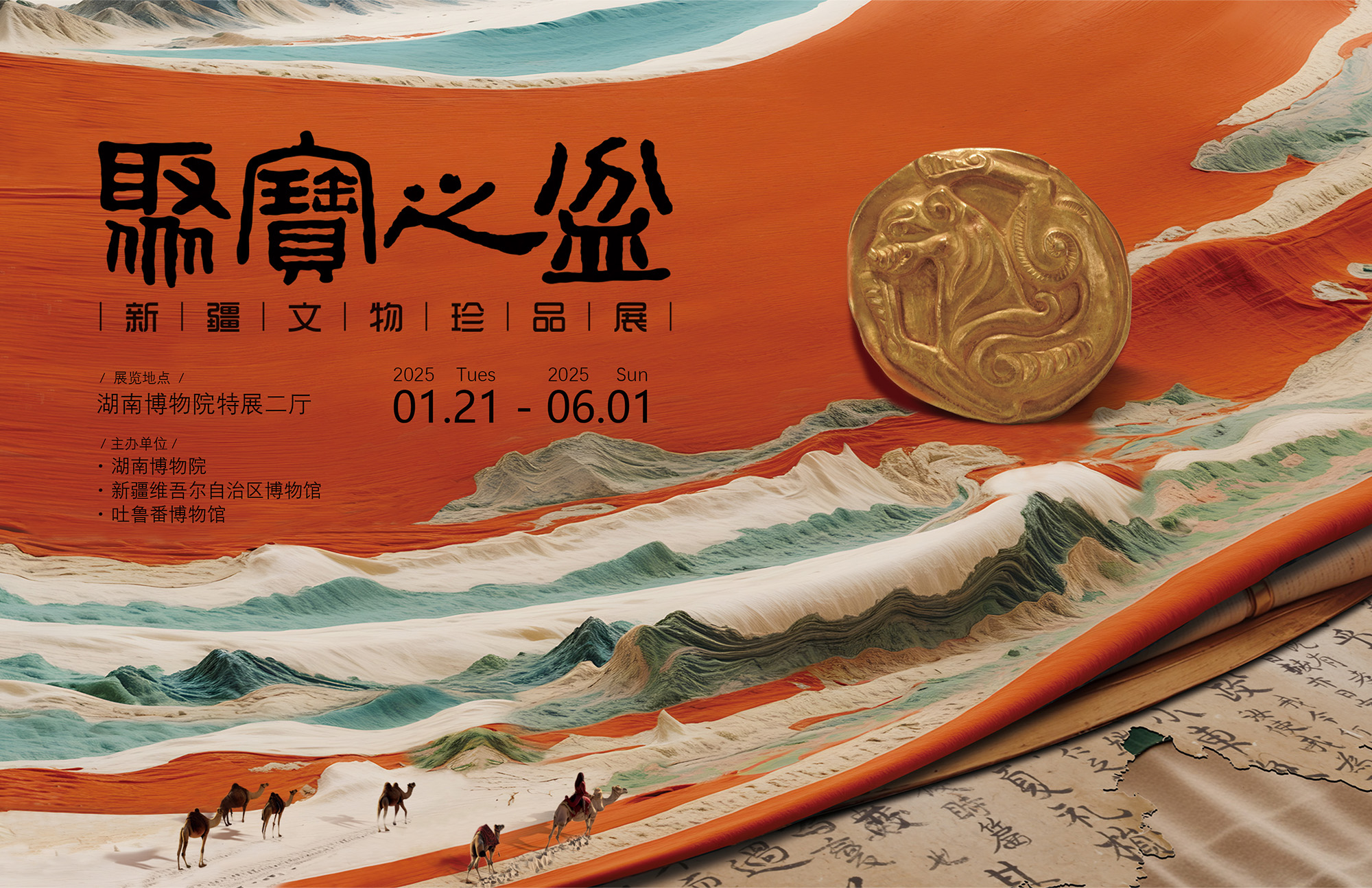
Introduction
The Treasures of Xinjiang: Exhibition of Precious Cultural Relics from Xinjiang
Xinjiang is a region boasting vast territory, abundant resources, magnificent landscapes, and a splendid historical and cultural heritage. Since time immemorial, it has served as a melting pot for multiple ethnic groups, religions, and cultures. Central governments throughout different dynasties have exercised jurisdiction over Xinjiang. All ethnic groups in Xinjiang are closely - knit members of the Chinese nation, bound by blood. They treat each other like family, offering mutual support, sharing joys and sorrows, and standing together through thick and thin. Over thousands of years of interaction, exchange, and integration, people of all ethnic groups in Xinjiang have united as closely as pomegranate seeds within the big family of the Chinese nation. They have composed a magnificent epic of developing and building Xinjiang, jointly forging a diverse yet integrated and resplendent Chinese civilization.
The unique geographical environment endows Xinjiang's historical and cultural heritage with distinct regional characteristics. The textiles, documents, and tomb paintings unearthed in Xinjiang have far - reaching influence both nationally and globally. These can be regarded as national treasures, depicting the production and living conditions of ancient Xinjiang residents and providing copious materials for research in disciplines such as history, archaeology, and art.
In the late Qing Dynasty, Zuo Zongtang, a national hero from Hunan, led his troops to reconquer Xinjiang. He highly commended Xinjiang, stating, "Both the southern and northern regions of the Tianshan Mountains are abundant in grain production, with numerous fruits, flocks of cattle and sheep, and herds of horses. There are extremely rich reserves of coal, iron, gold, silver, and jade. What appears to be a vast expanse of desert for thousands of miles is actually a basin teeming with treasures." This time, the Hunan Museum, in collaboration with the Xinjiang Uygur Autonomous Region Museum and the Turpan Museum, is jointly hosting "The Treasures of Xinjiang: Exhibition of Precious Cultural Relics from Xinjiang". A total of 158 pieces (sets) of precious cultural relics, encompassing metalware, pottery, textiles, documents, calligraphy, and paintings, have been meticulously selected. The exhibition unfolds the historical and cultural narratives of Xinjiang from aspects such as the natural environment, the transformation from nomadic to agricultural production patterns, and the rich material and spiritual civilizations.
The Tianshan Mountains, a World Natural Heritage, traverse the central part of Xinjiang. Beneath the Tianshan Mountains lies the Silk Road, stretching across thousands of miles and spanning thousands of years. The Silk Road Spirit, characterized by peace and cooperation, openness and inclusiveness, mutual learning, and mutual benefit, is a legacy of human civilization. The treasures along the Silk Road embody the beauty of China's diverse yet integrated landscapes, history, and culture. Xinjiang's rich cultural heritage is a spiritual and cultural extravaganza that people of all ethnic groups should not miss.
Highlights
- 三角纹栽绒毯
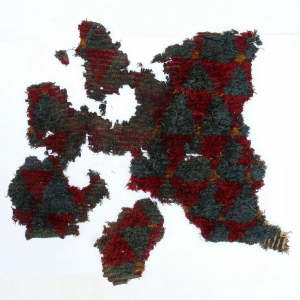
- 包金虎形铜牌
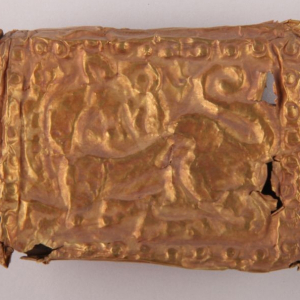
- 虎噬羊铜牌
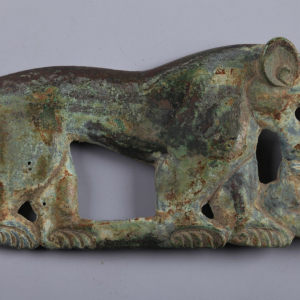
- 虎形圆金牌
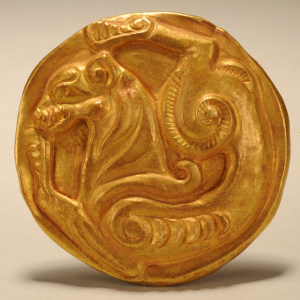
- 对虎纹金箔带
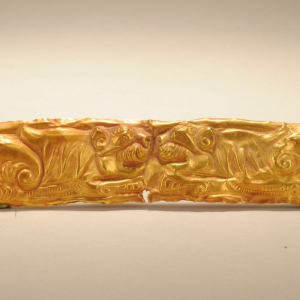
- 翼兽对视铜环
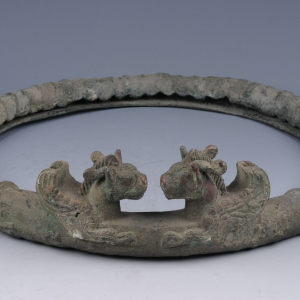
- 蜷狼纹铜镜
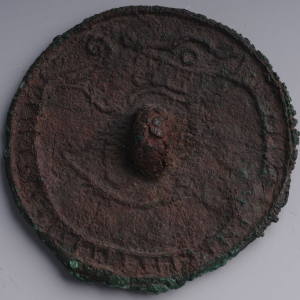
- 羊形柄铜镜
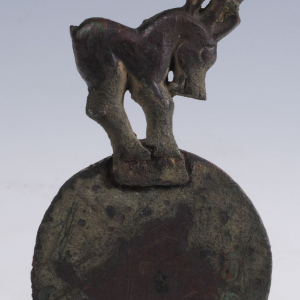
- 天青色女上衣
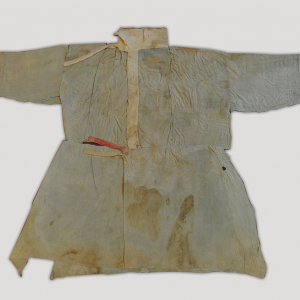
- 树纹锦覆面
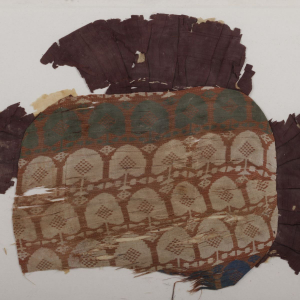
- 蜡染蓝白印花棉布
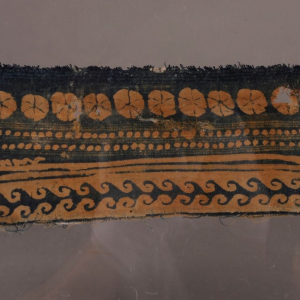
- 汉(公元前 202 年—220 年) 毛 ①长 20、宽 3.8 厘米 ②长 10.5、宽 3 厘米 ③长 7、宽 3 厘米 和田洛浦县山普拉墓地 1 号墓出土 新疆维吾尔自治区博物馆藏 【展品说明】 绿地葡萄纹罽为双层两面纹毛织物,绿地,黄棕色显花,图案是折技葡萄纹样和葡萄叶纹,残为三片。罽是中国古代毛纺织品中的精品,通常将精细的或提花的的毛织物称作罽,其中分为细罽、彩罽、花罽等。罽一般作为古代新疆人的服饰出现,通常将罽缝制成各种的衣物如长短衣、裤装及一些冥具如枕头、护颌罩、覆面等,以丰富生活品质。 考古资料表明,至少在春秋时期新疆已种植葡萄,到了汉代葡萄传入中原。《齐民要术》曰:“汉武帝使张骞到大宛,取葡萄实,如离宫别馆旁尽种之。”到了唐代,葡萄纹在工艺美术领域里已普遍流行,葡萄蔓延的枝条和丰硕的果实象征着“富贵长寿”,深受人们的喜爱。See More
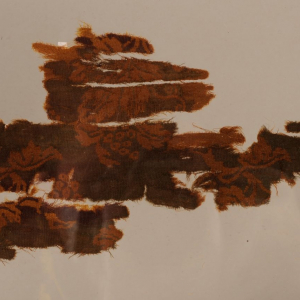

Introduction
A Far Journey - An Exhibition of Tai Xiangzhou's Works in Tribute to the Han Dynasty Paintings of Mawangdui
From December 21, 2024 to February 21, 2025, Hunan Museum will hold the "A Far Journey - An Exhibition of Tai Xiangzhou's Works in Tribute to the Han Dynasty Paintings of Mawangdui" in No.3 Exhibition Hall on the third floor.
This exhibition is the grand finale of the series of activities marking the 50th anniversary of the archaeological excavation of the Mawangdui Han Tombs by Hunan Museum. It carefully selects a total of 70 pieces (sets) of Tai Xiangzhou's new works in the past two years and representative works from different periods, which is a phased summary and retrospective exhibition of Tai Xiangzhou. The exhibition is divided into four sections, mainly presenting a new interpretation of the cultural patterns of the Han Dynasty in Mawangdui in the contemporary context, and how to continuously update artistic expressions with the characteristics of the times in the face of the profound history and culture of Xiaoxiang. The Xiaoxiang series of works are based on Tai Xiangzhou's research on Song Dynasty paintings. Considering the locality of the exhibition itself and combining the traditional culture and landscape features of Hunan, he reinterprets and explains the historically famous "Eight Scenes of Xiaoxiang Landscape Paintings" in a contemporary artistic language, completing a dialogue with the Huxiang culture, which can also be called "Inquiring into Xiaoxiang". The Celestial Phenomena series is one of his representative works. Especially in the expression of mountain stone structures and clouds, he has developed his own unique painting language, expanding ink painting to the spatial and temporal dimensions of geography and even cosmology. Learning from the ancients is the best way to study traditional Chinese painting. Tai Xiangzhou's Imitation of Ancient Landscape series precisely takes inspiration from the classic landscape paintings of the Song Dynasty and injects his own ideas and concepts, making the paintings present the characteristics of the times with "new looks on ancient appearances".
Tai Xiangzhou deeply understands that to enter the history of art, one must be familiar with the ideological and philosophical histories of ancient and modern times and complete one's own artistic construction and academic system. Looking at his painting process and ideological concepts, you will find that they subtly conform to Chinese philosophy and artistic spirit, reflecting the contemporary artist's thinking and exploration of the real world in the context of the new era. The exhibition aims to actively promote the innovation and
development of contemporary Chinese landscape painting and enable more people to understand and inherit the excellent traditional Chinese culture.
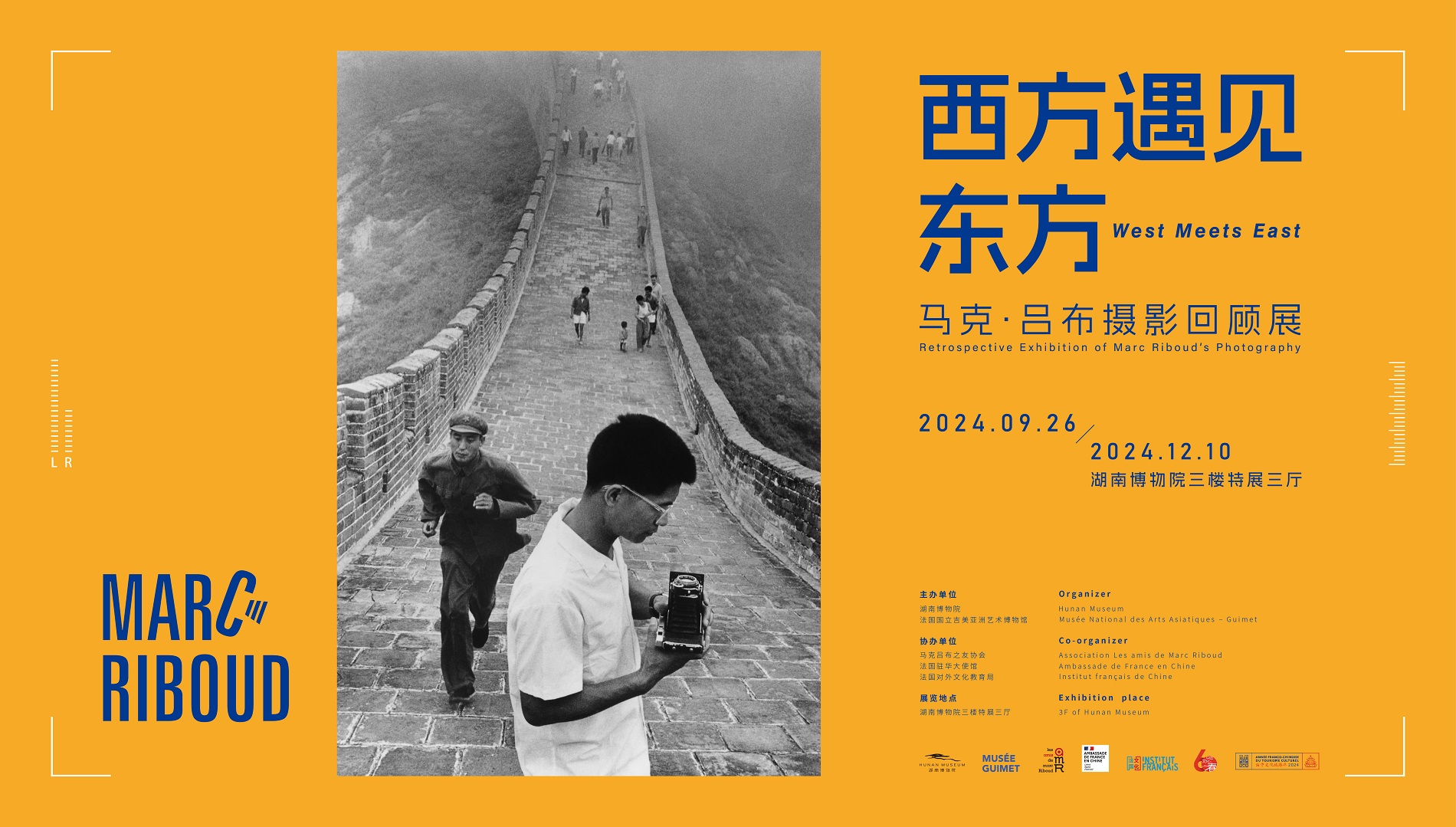
Introduction
West Meets East:Retrospective Exhibition of Marc Riboud’s Photography
2024 marks the 60th anniversary of the establishment of diplomatic relations between China and France and the "China-France Year of Cultural Tourism". On this significant celebratory year, the Hunan Museum, in collaboration with the Musee National des Arts Asiatiques-Guimet, will hold the West Meets East:Retrospective Exhibition of Marc Riboud’s Photography in the special exhibition hall on the third floor of the Hunan Museum from September 26 to December 10, this exhibition is free to the public. This exhibition is organized by the Hunan Museum and the Musee National des Arts Asiatiques-Guimet, co-organized by the Association Les amis de Marc Riboud, Ambassade de France en Chine and Institut francais de Chine. This exhibition is also an important visual art project of the "2024 Croisements Festival-Special Presentation for the 60th Anniversary of the Establishment of Diplomatic Relations between China and France".
This exhibition selects 118 pieces/sets of classic photographic works by Marc Riboud from the collection of the Musee National des Arts Asiatiques- Guimet, including the valuable photos taken by Marc during his more than 20-times visits to China from 1957 to 2010. With Marc’s acute instinct, unique artistic insight and abundant photographic language, he captured the real pictures of various classes of Chinese society, and objectively introduced the huge transformation of history and society in China from 1950s to 2010 to the West. Marc’s photographic works not only have extremely high artistic value but also monumental historical significance. His works have witnessed great historical changes in China, many classic moments have become the epitome of China in the 20th century.
As Marc Riboud said, "The countries I love are like my friends. I like to see them again and understand their development and changes. Therefore, I often return to China. Everything here is developing faster than in other places. Even a careful person can see the eternity of things under this restless appearance."
Highlights
- Painter on the Eiffel Tower
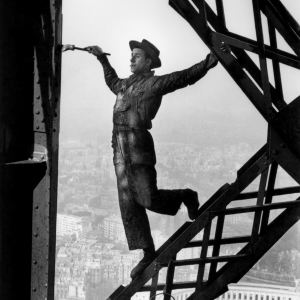
- Diver in Dubrovnik
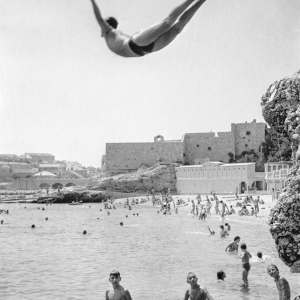
- Khyber Pass
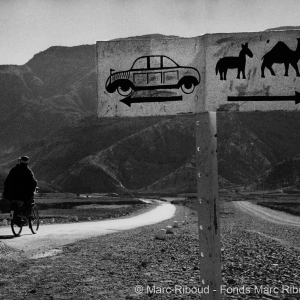
- Boy in a gun factory, at the border between Pakistan and Afghanistan
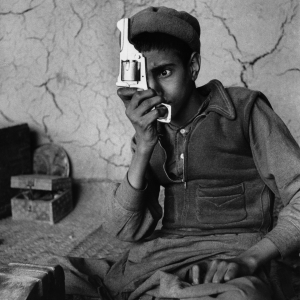
- The young girl with a flower, demonstration against the war in Vietnam,
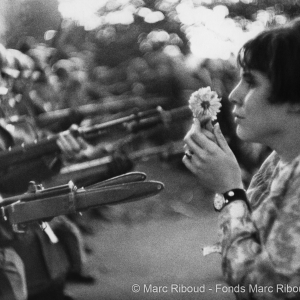
- Peasant in a train between Hong Kongand Guangdong
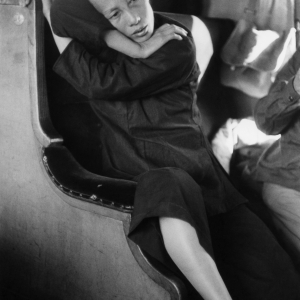
- Canteen in steelwork factory
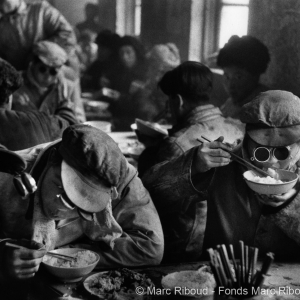
- Antique shop windows
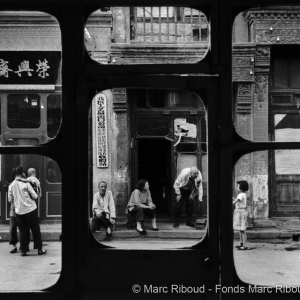
- Photographer on the Great Wall
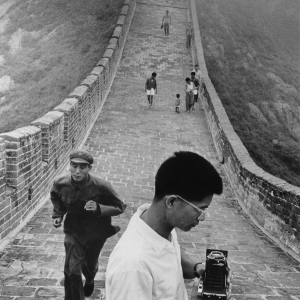
- Huang Shan
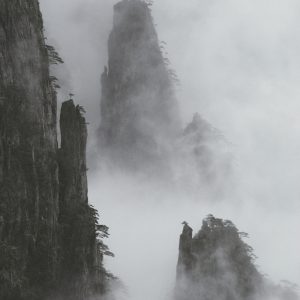
Artist introduction
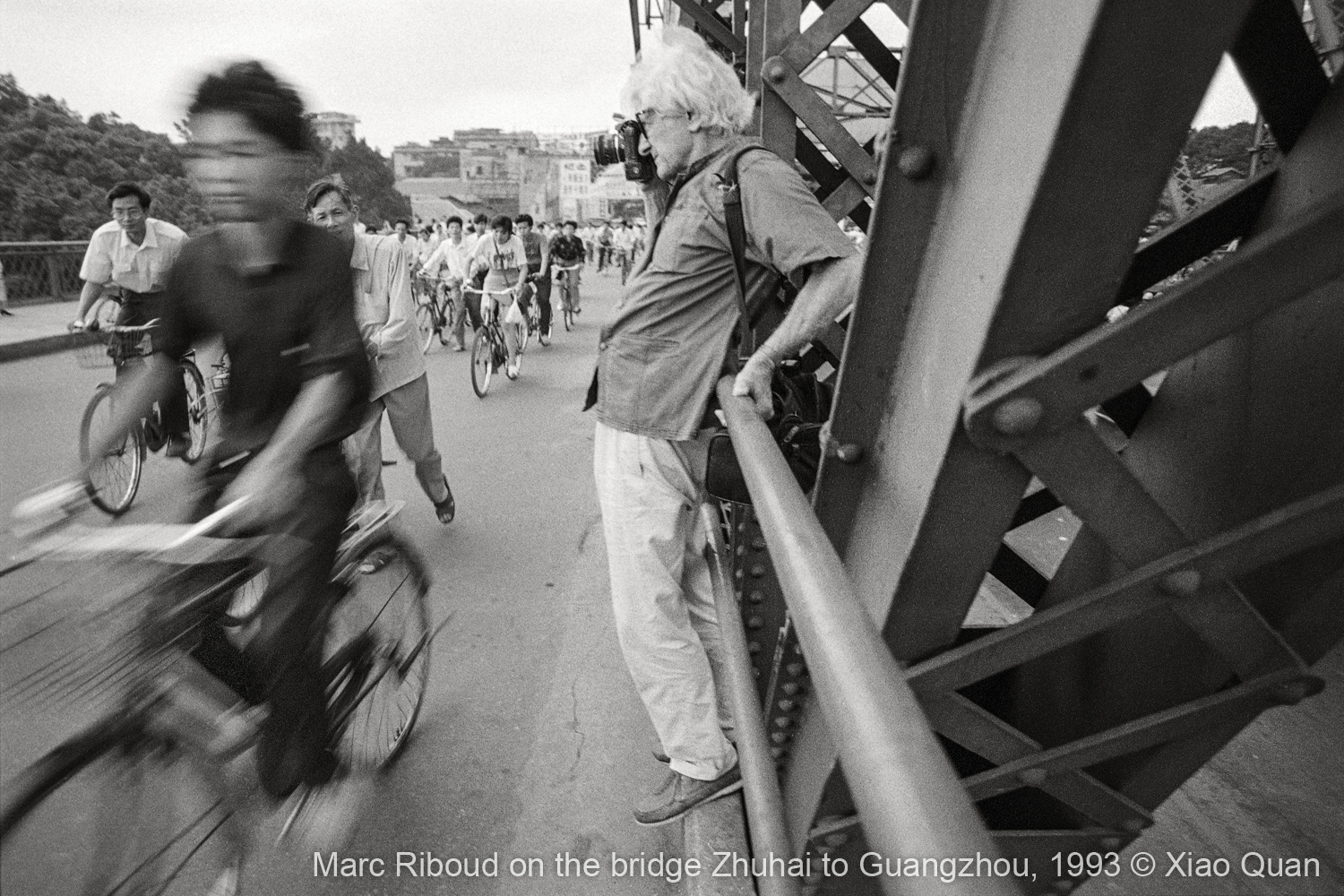
Marc Riboud, a famous French photographer, was born in Lyon, France in 1923. He took his first photos1937. At the age of 29, he became a photographer. In Paris, he met Henri Cartier-Bresson and Robert Capa, and at their invitation he joined the Magnum Photos agency.
After living in the UK for one year, he embarked on a long journey. His first destination was Beirut, the capital of Lebanon, then came the Turkey, Iran, Pakistan, Afghanistan and Nepal, finally he arrived in Kolkata, India.The journey took a whole year. In 1957, he traveled to China for the first time. In 1958, he lived in Japan for several months.
In the early 1960s, he photographed Algerian and African Independence Movement, and he visited former Soviet Union for several times. Since 1979, he has been shuttling between China and other places continuously, he recorded the tremendous changes of Chinese society and developed a deep connection with Huang Shan. Also, he visited Angkor monuments in Cambodia many times, and photographed in Turkey and France.
Between 1957 and 2010, Marc Riboud visited China for more than 20 times, China was the country that Riboud photographed the most. He observed the changes in Chinese society with passion, “Observing is the best way to know China”, this mindset drove him to shuttle between China and other places again and again. While photographing, Riboud believed that China is full of beauty, surprising and endless inspirations. His records of China’s pivotal history over 50 years have become precious witness that era.
Intuitive, insightful, elegant and vivid, his works are always beautifully composed with a natural sense of geometry. As Martin Parr, former president of Magnum Photos agency, said, "Riboud is one of the few photographers who combine the worlds of photojournalism and art.
Marc Riboud was a world-renowned photographer and former President of the European Division in Magnum Photos agency. His works were published in prestigious magazines such as Life Magazine, National Geographic, and Paris Match. They were also exhibited in a number of prestigious museums and galleries around the globe. He received numerous awards including the prize from the Overseas Press Club, the International Center of Photography's Infinity Award in New York, the Leica Lifetime Achievement Award, and the Lifetime Achievement Award from the Sony World Photography Awards.
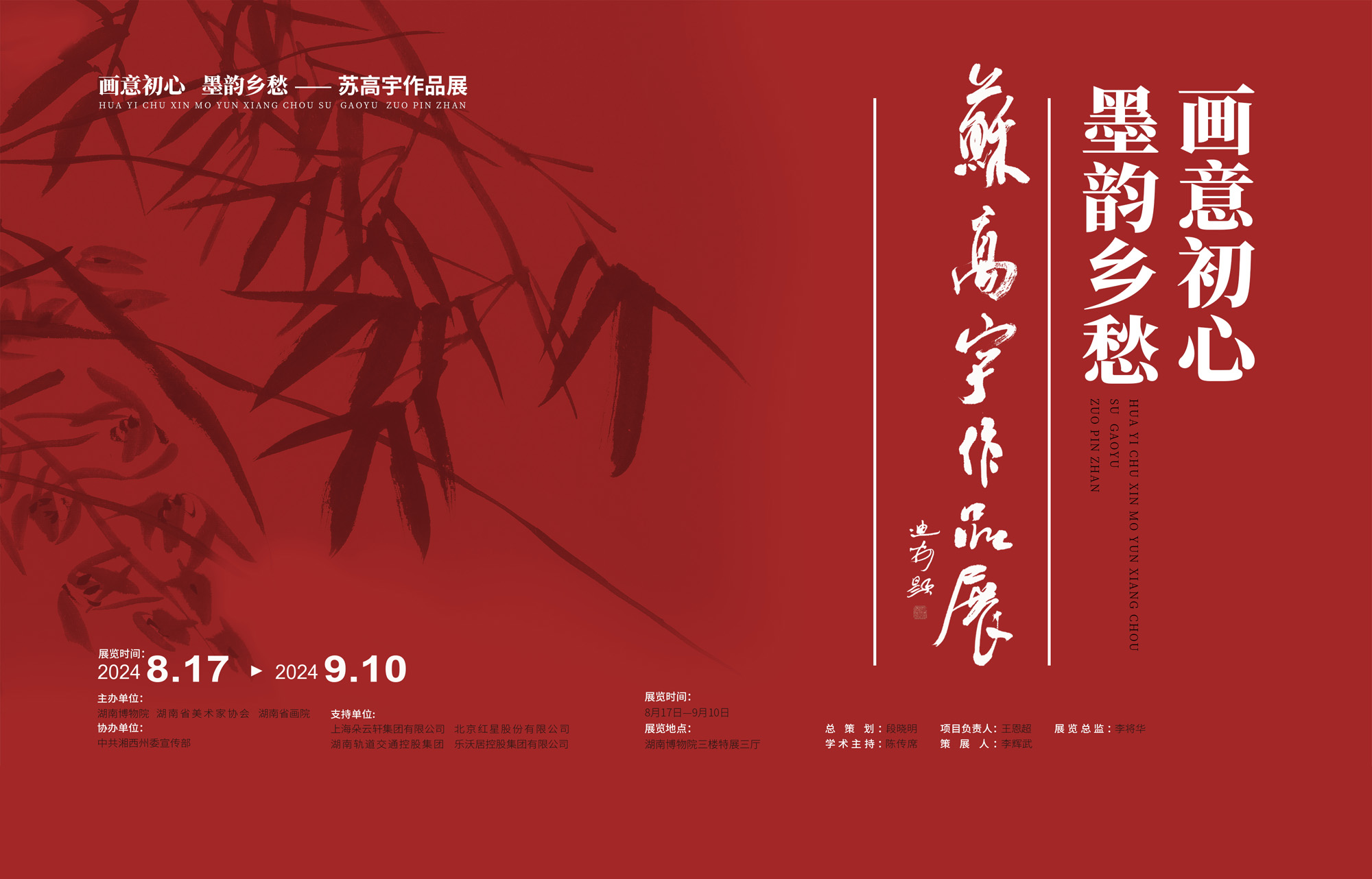
Introduction
The Pure Heart of Art, The Nostalgia in Ink -- Exhibition of Su Gaoyu's Works
The Hunan Museum will hold the exhibition “ The Pure Heart of Art, The Nostalgia in Ink -- Exhibition of Su Gaoyu's Works” in the Special Exhibition Hall on the third floor from August 17, 2024 to September 10. The exhibition was jointly hosted by the Hunan Museum, the Hunan Artists Association, the Hunan Provincial Painting Academy, and co-organized by the Publicity Department of the CPC Xiangxi Prefecture Committee.
The exhibition has selected more than 100 pieces (sets) of Su Gao Yu's works, covering Su's creative process of more than 40 years. It is a retrospective exhibition on stage-by-stage summary.To prominently showcase Su's artistic styles and creative concepts in different periods, this exhibition selected Su’s representative works from each period so that the audience can have a profound comparison when viewing. The curatorial team communicated and coordinated with Su himself many times during the preparation of the exhibition. As the works themselves are mainly expressive freehand painting themed on flower-and-bird, considering the limitation of the exhibition area, in order to maximize the presentation of the characteristics of the works themselves, this exhibition still broke the museum's conventional curatorial method of using time clues as the vein, and eliminated the unit descriptions, so as to allow the works themselves to go to the audience for a dialogue. In terms of the flow of visitors, the form designer, in accordance with the characteristics of the area itself, did not borrow too much from the exhibition wall to set up a diversion area, but took the audience's point of sight as the core, and created a visiting atmosphere in line with the tone of the works step by step. Despite the absence of large-scale thematic works, the expressive freehand paintings themed on flower-and-bird reveal a vast world within small details.
The exhibition strives to foster innovation in contemporary Chinese freehand paintings themed on flower-and-bird and encourage a deeper understanding and preservation of China's rich cultural heritage.
Highlights
- 十六岁临摹徐悲鸿《奔马》 苏高宇
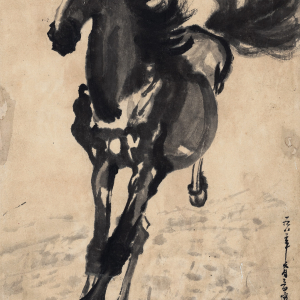
- 十六岁山水画习作 苏高宇
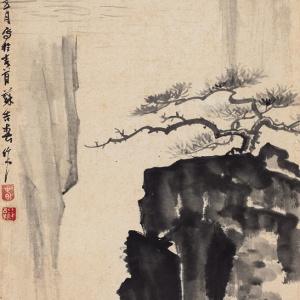
- 紫藤真态 苏高宇
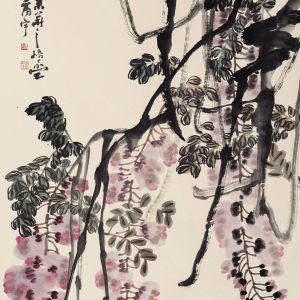
- 铁石身 苏高宇
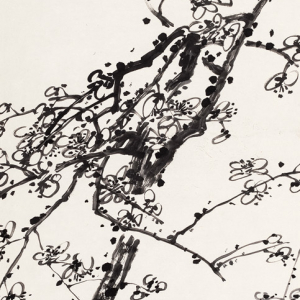
- 寒塘荷影 苏高宇
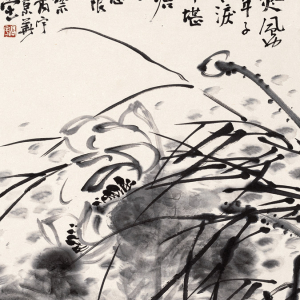
- 老霜骨 苏高宇
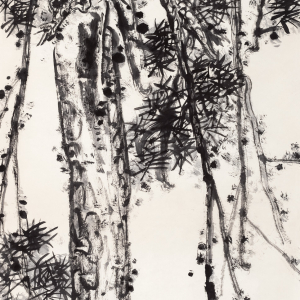
- 祈盼 苏高宇
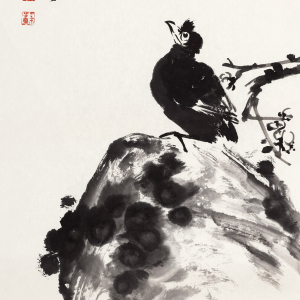
- 验其香否 苏高宇
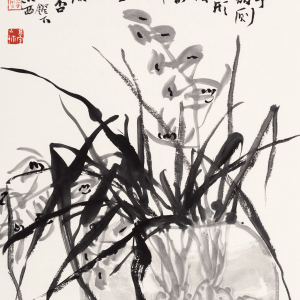
- 枇杷 苏高宇
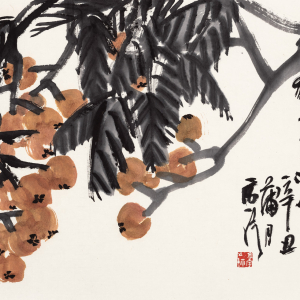
- 枇杷 苏高宇
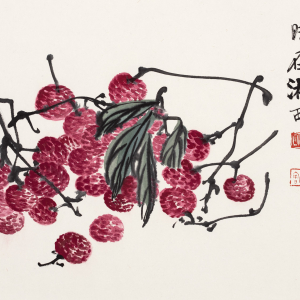
- 距离产生美 苏高宇
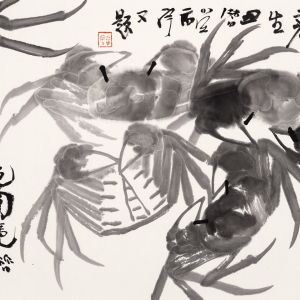
- 写意花鸟画 38cm×41cm 2021 年See More
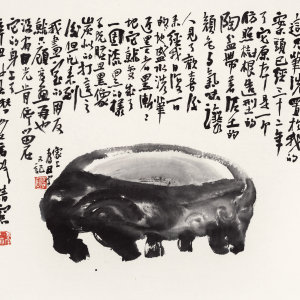

Introduction
画意初心 墨韵乡愁——苏高宇作品展
湖南博物院将于 2024年8月17日至2024年9月10日在三楼特展三厅举办“画意初心 墨韵乡愁——苏高宇作品展”。该展览由湖南博物院、湖南省美术家协会、湖南省画院联合主办,中共湘西州委宣传部协办。
此次展览遴选了苏高宇一百余件(套)作品,涵盖艺术家四十余年的创作历程,是一次阶段性的总结回顾展。为了突出展示艺术家不同时间段的艺术风格和创作理念,我们选取了艺术家各个时期的代表作品,以便观众在观看时能有深刻的对比。策展团队在展览筹备期间,多次与艺术家本人沟通协调,因展品本身主要是大写意花鸟画小品,考虑到展厅展陈面积的限制,为了最大程度地呈现展品本身的特点,依然打破了博物馆常规以时间线索为脉络的策展方式,取消了单元说明和部说明,让作品本身去和观众对话。在参观流线方面,形式设计师按照场馆本身的特点,没有过多借用展墙设置分流区域,而是以观众视点为核心,一步一景营造出符合画面格调的参观氛围。尽管此次展品中没有主题性创作的大制作,几乎都是大写意花鸟画小品,但是我们可以“小中见大,从而见微知著,进而又见一番天地。”
展览旨在积极推动中国当代写意花鸟画的创新和发展,让更多的人了解和传承中华优秀的传统文化。
Highlights
- 十六岁临摹徐悲鸿《奔马》 苏高宇

- 十六岁山水画习作 苏高宇

- 紫藤真态 苏高宇

- 铁石身 苏高宇

- 寒塘荷影 苏高宇

- 老霜骨 苏高宇

- 祈盼 苏高宇

- 验其香否 苏高宇

- 枇杷 苏高宇

- 枇杷 苏高宇

- 距离产生美 苏高宇

- 写意花鸟画 38cm×41cm 2021 年See More

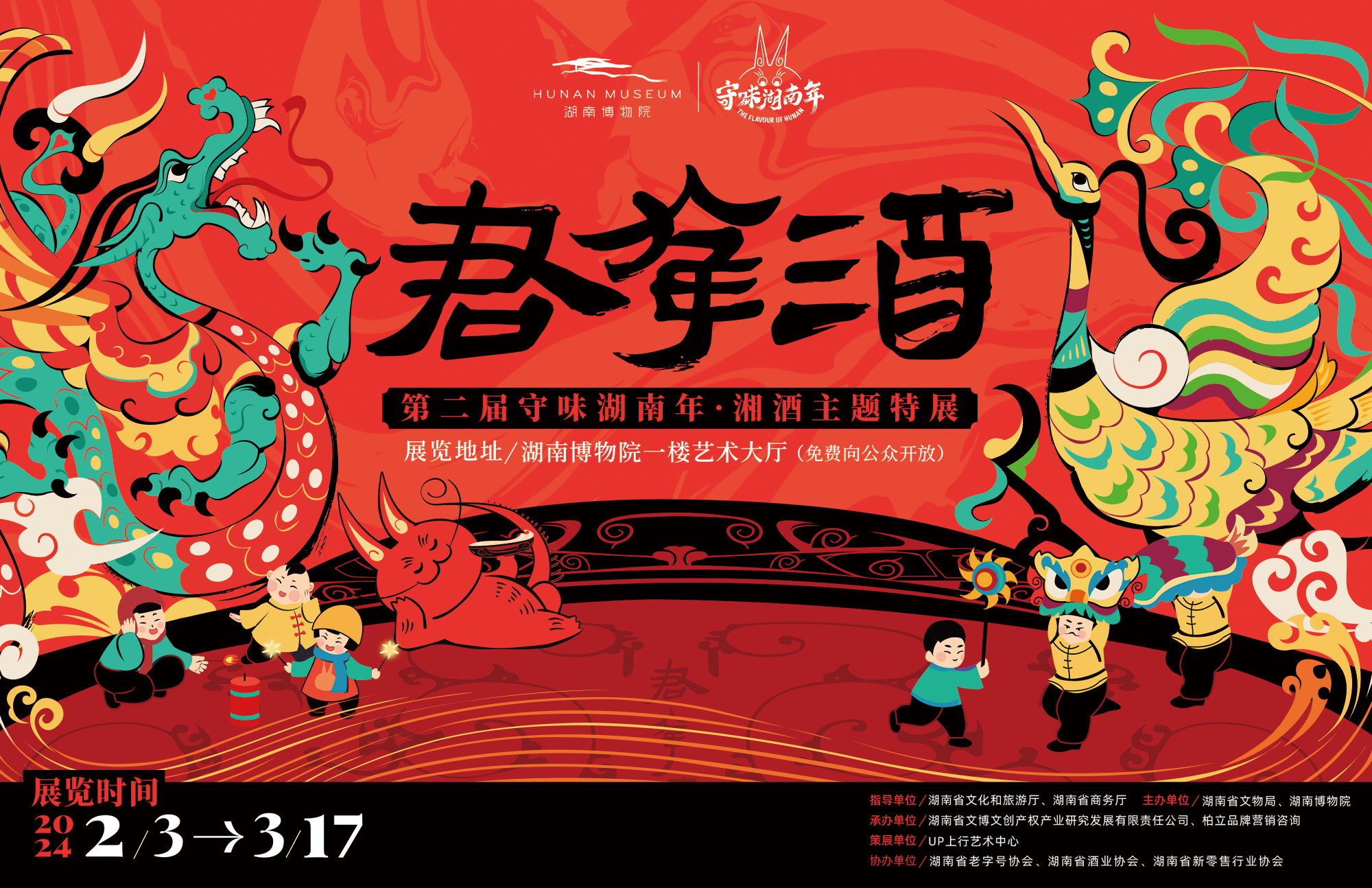
Introduction
The Flavor of Hunan Ⅱ
“The Flavor of Hunan Ⅱ” delves into the cultural artifacts related to liquor in the Hunan Museum. It combines local liquor customs, liquor culture, and liquor brands of Hunan Province. Through three perspectives — historical humanities, geographical conditions, and liquor customs — it interprets the profound history and tradition of Hunan liquor, its rich artisan culture, abundant revolutionary history, diverse cultural heritage, and intangible cultural legacy.
The exhibition is divided into four major sections, including "Liquor Culture in Hunan Museum" "Brewing Fine Liquor in Hunan" "Brewing Techniques," and "Fragrant Bistro". Through a sensory experience that engages sight, hearing, smell, taste, and touch, it guides the audience to appreciate the charm of Hunan liquor culture.
Highlights
- “酿酒有时”汉画像砖插画
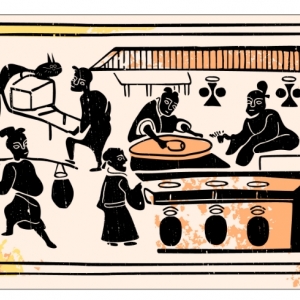
- “卖酒有垆” 汉画像砖插画
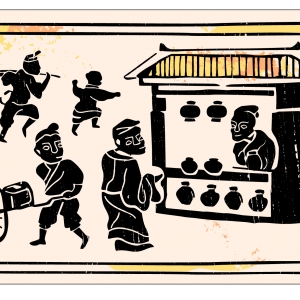
- “饮酒有法” 汉画像砖插画
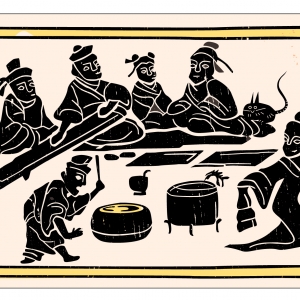
- 豕( shǐ)形铜尊
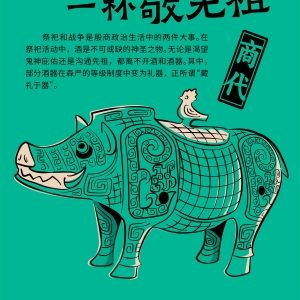
- 皿方罍(léi)
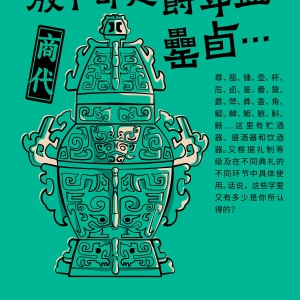
- 兽面纹铜爵
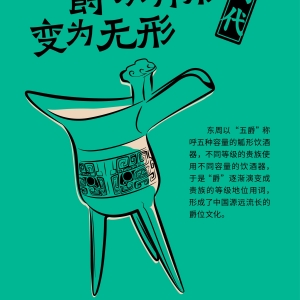
- “旅父甲”铜尊
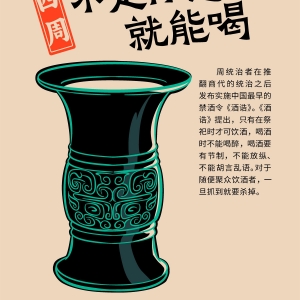
- 镶嵌绿松石铜方壶
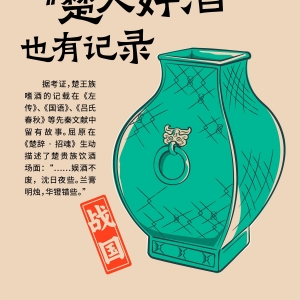
- “君幸酒”云纹漆耳杯
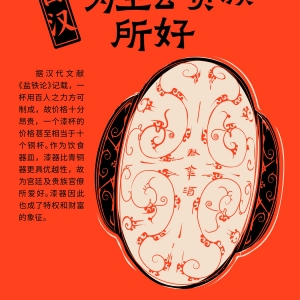
- 漆绘龙纹勺
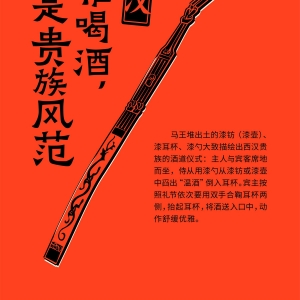
- 云纹漆锺
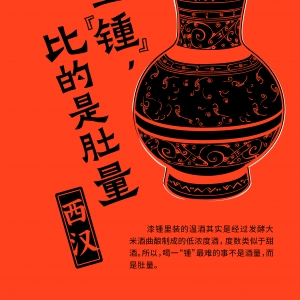
- 唐 高19厘米 口径9.2厘米 底径10厘米 茶以后才出现带“流”的执壶,又称“注子”,可分酒也可分茶。以诗歌为饰是长沙窑装饰的重要特征,这件壶的诗文爽口、书道遒劲,是其代表作。在流下腹部题以褐彩写诗歌一首:“春水春池满,春时春草生,春人饮春酒,春鸟哢(lòng)春声”,从中可以一窥当时湖南人畅饮春酒的生活场景。 【古人也好酒】冬天里酿造的“春天” 春酒,即冻醪,是唐时人们常饮用的酒,寒冬酿造,春天饮故名。据《诗·豳风·七月》记载:“十月获稻,为此春酒,以介眉寿”。长沙窑瓷执壶上也有“美春酒”“陈家美春酒”等酒名。See More
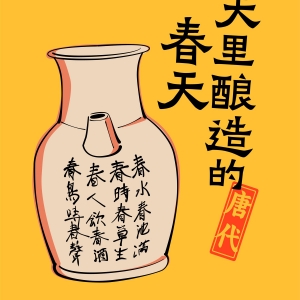
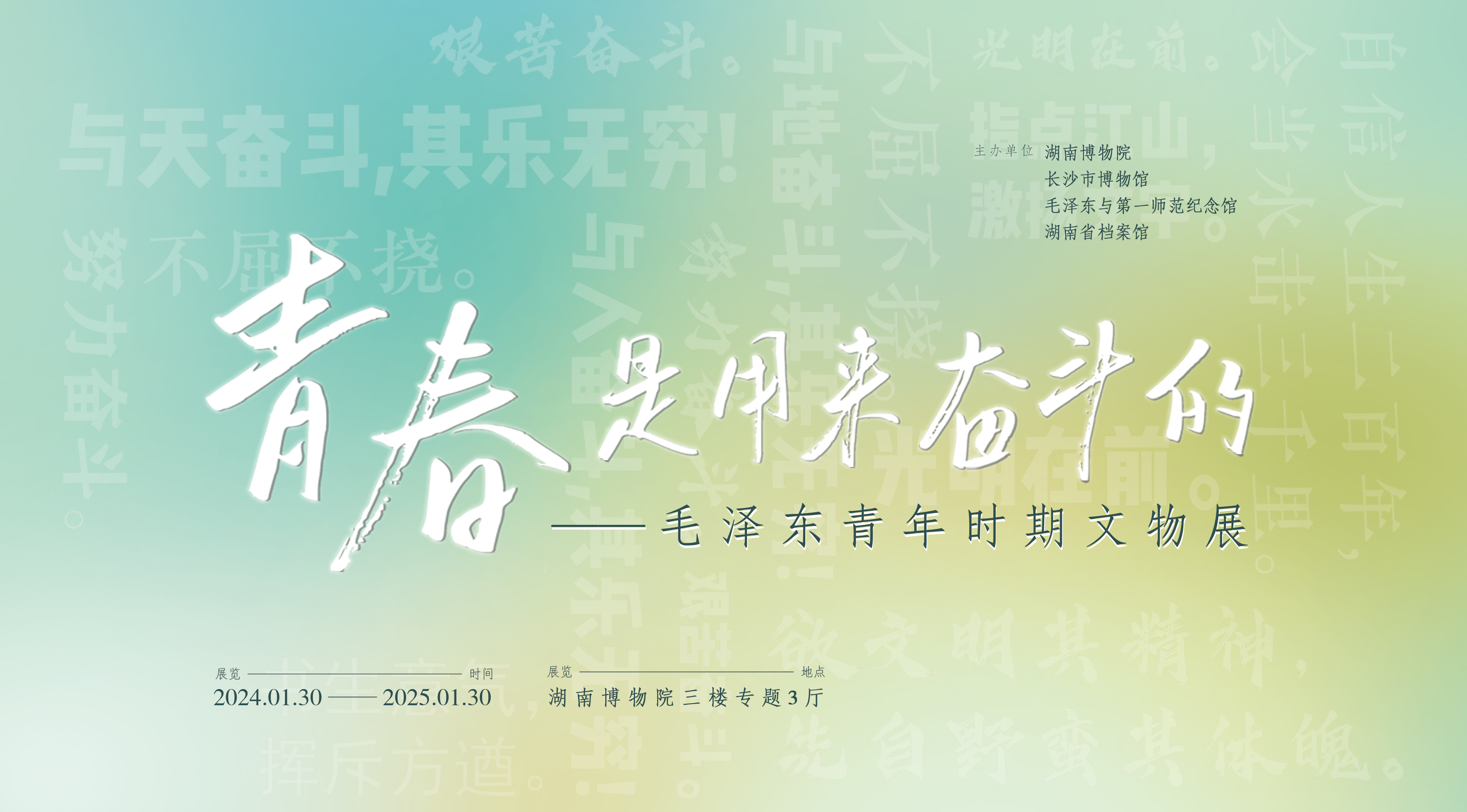
Introduction
Youth is Meant for Striving: An Exhibition of Youthful Mao Zedong’s Cultural Relics
Over the past century, with every forward stride of the era, the figure of the youth has been reflected, promoting the victory with their beliefs, suppressing the turbulence through diligence, and composing the anthem of the times with their youth.
Youthful Mao Zedong harbored lofty ideals, sought knowledge, tempered revolutionary skills, pursued truth, courageously undertook the mission of national rejuvenation, and harmonized knowledge with action, awakening the masses of workers and peasants. Confronting difficulties directly, he dared to struggle and advocated for striving.
This exhibition, centered around time, carefully selects over 150 exhibits from the Hunan Museum, Changsha Museum, Mao Zedong and the First Normal School Memorial Hall, and Hunan Provincial Archives. It showcases the journey of young Mao Zedong from studying at the normal school to leading the movements of workers and peasants, narrating his exemplary influence in cultivating moral character, establishing lofty ideals, loving the great motherland, and shouldering the responsibilities of his era.
Highlights
- 1913年《湖南省立第一师范学校章程》
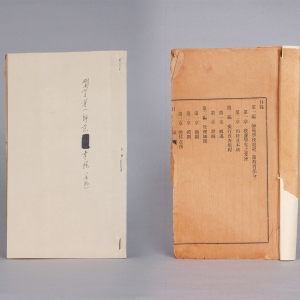
- 1914年《湖南省立第一师范学校管理细则》

- 1918年《湖南省立第一师范学校志》
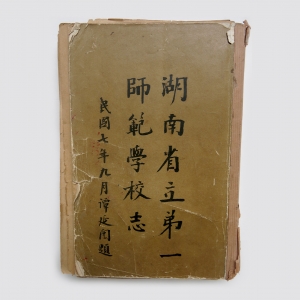
- 1914年《湖南省立第一师范学校职教员学生一览表》
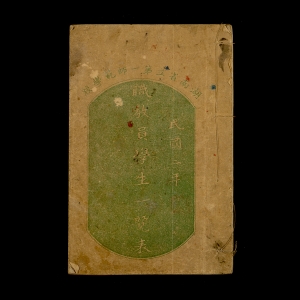
- 20世纪初出版的《新民丛报》50777
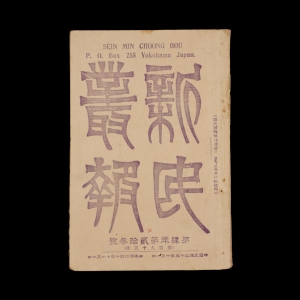
- 清拓岳麓书院法帖
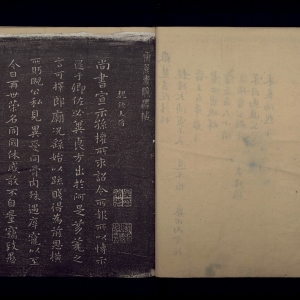
- 1917年《新青年》第3卷第2号
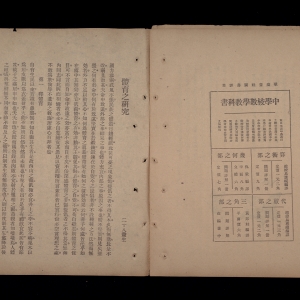
- 1917年6月《湖南省立第一师范学校同学录》
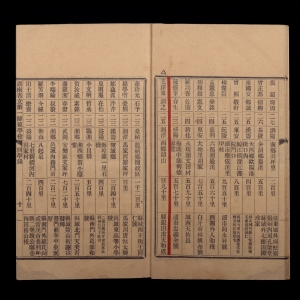
- 杨开慧烈士自传手稿
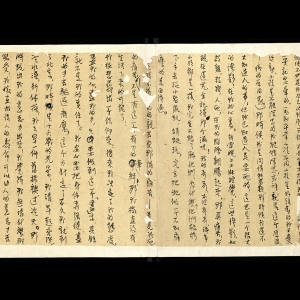
- 《海外乡谈》第二期
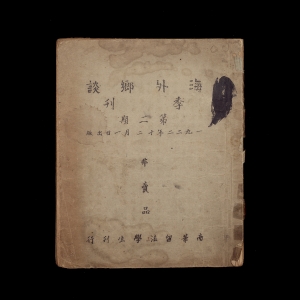
- 1920年2月5日湖南驻沪驱张请愿代表团编印的《天问》周刊
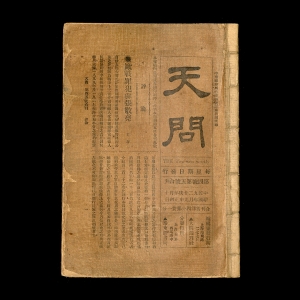
- 《湖南》月刊系驻沪驱张代表团所创办。1919年10月22日,毛泽东同湖南教育界1272人联署发出公启,揭露张敬尧操纵改选并控制省教育会的内幕,反对张敬尧摧残教育事业。公启于1920年2月20日在《湖南》月刊发表。See More


Introduction
“君幸酒”——第二届守味湖南年·湘酒主题特展
“君幸酒——第二届守味湖南年·湘酒主题特展”通过挖掘湖南博物院与酒有关的文物资源,结合湖南省本土的酒俗、酒文化、酒品牌,从历史人文、地理风土以及酒俗生活三个视角演绎湘酒悠久历史传统、深厚的工匠文化、丰富的红色文化、多元的文化遗产和非物质文化遗产。
本次展览分为4大板块,包括湘博里的酒文化、湖湘酿好酒、酿造工艺以及馥郁酒馆,通过视觉、听觉、嗅觉、味觉、触觉的五感体验带领观众领略湖湘酒文化的魅力。
Highlights
- “酿酒有时”汉画像砖插画

- “卖酒有垆” 汉画像砖插画

- “饮酒有法” 汉画像砖插画

- 豕( shǐ)形铜尊

- 皿方罍(léi)

- 兽面纹铜爵

- “旅父甲”铜尊

- 镶嵌绿松石铜方壶

- “君幸酒”云纹漆耳杯

- 漆绘龙纹勺

- 云纹漆锺

- 唐 高19厘米 口径9.2厘米 底径10厘米 茶以后才出现带“流”的执壶,又称“注子”,可分酒也可分茶。以诗歌为饰是长沙窑装饰的重要特征,这件壶的诗文爽口、书道遒劲,是其代表作。在流下腹部题以褐彩写诗歌一首:“春水春池满,春时春草生,春人饮春酒,春鸟哢(lòng)春声”,从中可以一窥当时湖南人畅饮春酒的生活场景。 【古人也好酒】冬天里酿造的“春天” 春酒,即冻醪,是唐时人们常饮用的酒,寒冬酿造,春天饮故名。据《诗·豳风·七月》记载:“十月获稻,为此春酒,以介眉寿”。长沙窑瓷执壶上也有“美春酒”“陈家美春酒”等酒名。See More


